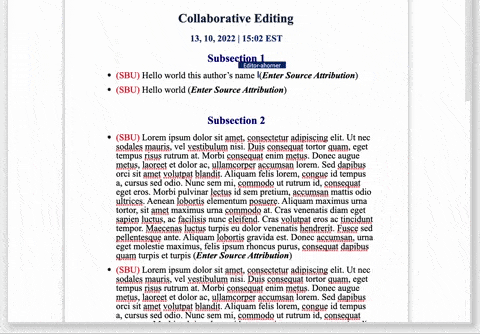
The Challenge
The Operations Center of a federal agency is responsible for monitoring disasters, emergencies, and incidents and then publishing timely reports to key stakeholders, including senior leadership, faster than they would receive information from news outlets. This highly time-sensitive and mission-critical process was being performed by drafting content in OneNote and copy-pasting that content into Outlook for publication, a time-consuming and error-prone process. Distribution was managed within Outlook and formatting needed to be manually set for every piece of content. This process was unsustainable for the office in the long term as products only existed in users’ inboxes, and authors had to copy and paste content between different systems. The office required a content management system in which they could quickly and collaboratively edit content, much like Google Docs, and then publish to multiple channels (email, PDF, and the web) from the same interface. This system also needed to handle information designated as sensitive but unclassified (SBU), adding an additional layer of security and process-related requirements.

The Solution
EK architected and built a collaborative authoring and multi-channel publishing content management system for the Operations Center. EK developers used ProseMirror, a collaborative text editing component, to create a custom text editor for Operations content. This editor includes pre-set templates depending on which content type is being drafted so that users do not have to spend time manually formatting their content. Additionally, the editor UI flags any content entry errors the user may have made so that the finished product is published without issues. Once users have completed their drafting process, they can publish their content as an email, PDF, and web page all in one click. To expedite the time to publish, the system also auto-classifies the document based upon the strictest classification of any single content component.
In order to facilitate the publication process, the CMS employs a set of microservices that render and assemble the content into its different formats. Content is stored in the backend as JSON files so that each component can be parsed and rebuilt correctly for each channel.


The EK Difference
EK was able to leverage the wide-ranging expertise of its staff to support this CMS implementation project. EK partnered with the operations office for a 3-year engagement that spanned the initial discovery and visioning phases of the product all the way through to developing the CMS into its maturity. EK employs experts in CMS architecture, development, content strategy, and product management who all collaborated on creating the best possible product for the operations center. EK staffed full-time resources on this project, eliminating the need to bring in subcontractors or outsourced resources.
As experts in knowledge management and content management, EK delivered features and functionality beyond that of a typical CMS implementation. The CMS EK architected employs a componentized content strategy that stores and tags content as building blocks instead of whole documents. EK also designed custom taxonomies that reflect the way users think about and interact with content. Both of these advanced content services underpin functionality in the CMS, like customer self-subscription, which allows users to decide which published products are delivered to their email inbox, faceted search, and content reuse.

The Results
EK successfully partnered with the operations office to stand up a CMS that has been in production for several years and has matured through more than eight minor releases. A full-time EK team has been working on and maintaining this CMS for the duration of that time, implementing an agile product roadmap designed to grow the CMS from minimum viability to a full-scale content creation, publication, and discovery hub. EK was able to quickly provide value to the operations center by releasing the initial version of the product within the first year of the engagement, ensuring the customer was able to benefit from the product even as additional functionality was being developed.
Using the new system, content authors are able to complete the publication workflow 20% faster than they were using the old process, giving them more time to perform mission-critical analysis of global events. Additionally, in their old infrastructure, emails sometimes took up to 75 minutes after sending to reach customer inboxes. Now, distribution channels have been streamlined so that content reaches its final destination in a matter of seconds.
Content consumers now benefit from a searchable repository of published content that they can use to analyze trends and patterns in global events, in addition to receiving timely updates in their inboxes. Prior to the CMS existing, there was no way for them to access and search through historical products unless they had saved them in their email inboxes.
